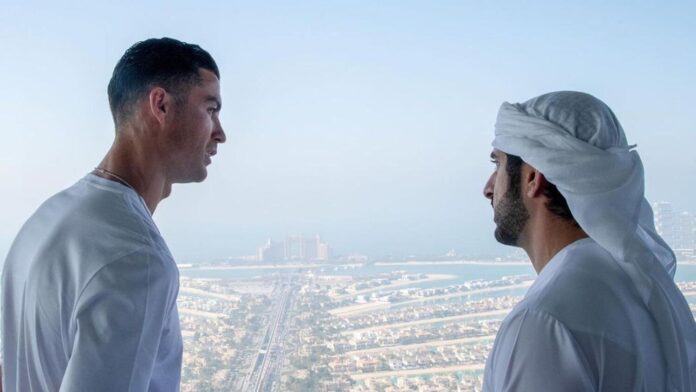A goliath wall painting including the Dubai Crown Prince and the city’s popular horizon has come up on Al Wasl Road. The wall painting likewise has a stanza written by Sheik Hamdan canister Mohammed receptacle Rashid Al Maktoum.
Traversing 18 meters in stature and 32 meters in width, the work of art portrays the Dubai Crown Prince taking a gander at the city’s notorious milestones from the window of a plane. The constructions highlighted incorporate the Burj Khalifa, Burj Al Arab, Emirates Towers, the Museum of the Future and the Dubai Frame.
A calligraphic interpretation of a stanza wrote by Sheik Hamdan says Dubai’s great accomplishments were just made conceivable by the vision of His Highness Sheik Mohammed receptacle Rashid Al Maktoum, Vice-President and Prime Minister of the UAE and Ruler of Dubai.
Brand Dubai, the innovative arm of the Government of Dubai Media Office (GDMO), and Dubai Electricity and Water Authority (Dewa), executed the wall painting as a component of the eighth release of Dubai Street Museum.
The Dubai Street Museum, sent off by Sheik Mohammed in 2016, tries to feature Dubai’s interesting character, values and goals by making particular public craftsmanships.
Craftsmen that have added to the venture incorporate Croatian representation craftsman Lonac, who is most popular for his huge scope photorealistic wall paintings; Emirati advanced craftsman Khalid Al Ramsi; and Emirati calligrapher Mohammed Hussain Al Tamimi.
Khawla Al Mehairi, chief VP of Strategy and Government Communications at Dewa, said: “The most recent painting project … tries to enhance Dubai’s inventive climate while additionally featuring its advancement and its status as a center for development.”
Shaima Al Suwaidi, city marking chief at Brand Dubai, said: “By working with neighborhood and global craftsmen, we look to recount the narrative of Dubai’s extraordinary culture, values, personality and desires. Through such drives, we likewise look to add interesting imaginative components to the fabricated climate in the city’s networks.”


